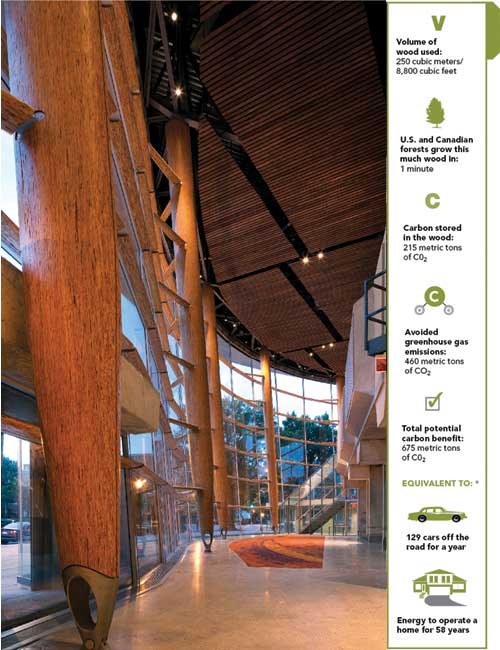Calculating Carbon Footprint
Wood: Solid Enough for Scrutiny
As the choice of building materials receives more scrutiny, and life cycle costs are more precisely analyzed, wood's environmental benefits throughout its use and re-use in buildings are being extensively documented.
Low-Waste Manufacturing
On average, North American wood producers use 99 percent of every tree brought to the mill for processing. According to a report from Dovetail Partners, Inc., the term “waste” is largely obsolete in the context of today's North American forest products industry, as logs brought to U.S. and Canadian sawmills and other wood product manufacturing centers are converted almost totally to useful products. The sector has been making strides since the 1930s and, in terms of fiber utilization, has become a zero-waste industry.13 (See timber utilization graphic on the previous page.)
Project: Arena Stage at the Mead Center for American Theater Arena Stage is the first modern building of its size to use heavy timber components in the United States capital. It was also the first project in the U.S. to use a hybrid wood and glass enclosure to envelop two existing structures. |
Low-Waste Design and Construction
Wood offers numerous opportunities for design and building professionals to reduce waste through design optimization, specification of recovered wood, and use of pre-sized framing members, or of pre-manufactured and engineered components. In many cases, clean job site waste can also be separated and taken to local recovery centers.










